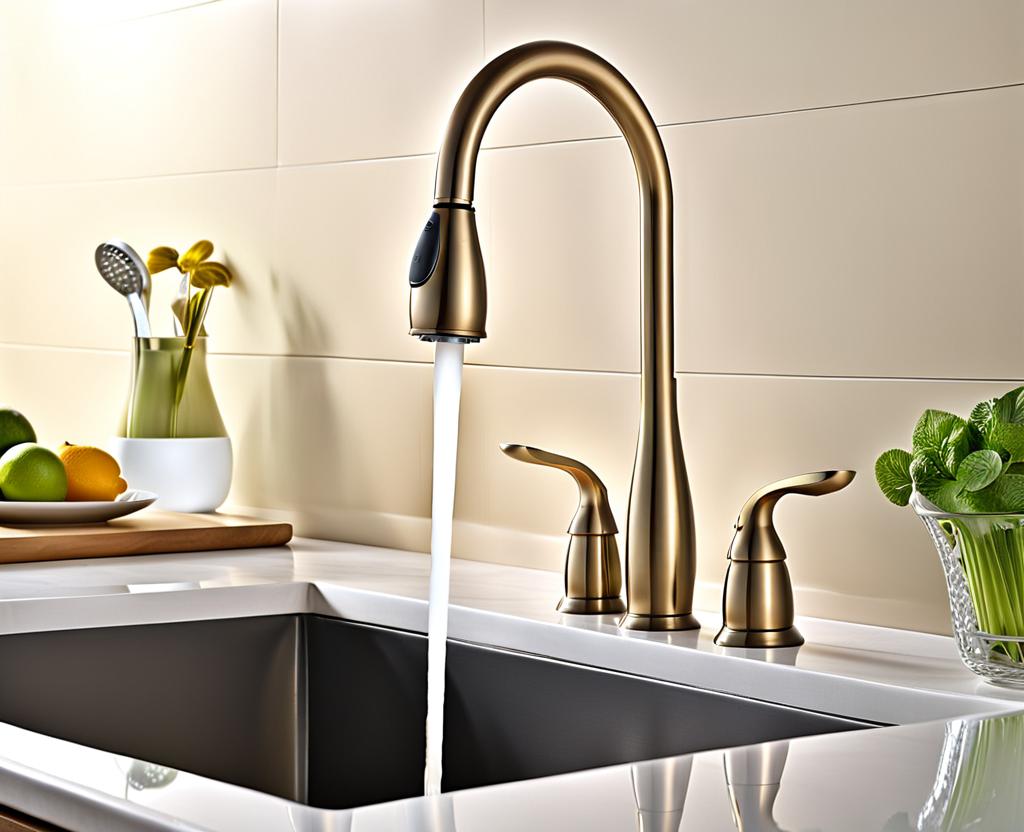A loose kitchen sink faucet can quickly turn a simple task like washing dishes into a frustrating ordeal. That wobbly motion, water leaks, and difficulty turning the faucet on or off are all telltale signs that something needs attention. Rather than letting the issue persist, it’s time to roll up your sleeves and tackle the problem head-on.
Identifying a Loose Kitchen Sink Faucet
Before diving into the repair process, it’s crucial to recognize the signs of a loose kitchen sink faucet. The most obvious indication is a noticeable wobble or unstable movement when you operate the faucet handle. Additionally, you may notice water leaks around the base of the faucet or at the connections, signaling that something is amiss. In some cases, the faucet might become increasingly difficult to turn on or off, requiring excessive force.

These issues can arise due to various reasons, including worn washers, loose mounting nuts, or corroded pipes. While it may be tempting to ignore the problem, addressing a loose faucet promptly is essential to prevent further damage and potential water leaks that could lead to costly repairs down the line.
Tools and Materials Needed
Tackling a loose kitchen sink faucet doesn’t require an extensive toolbox. With a few basic tools and materials, you’ll be well-equipped to handle the job. First, gather an adjustable wrench, a pair of pliers, and a basin wrench, which is specially designed for tight spaces beneath the sink. Next, have replacement washers, mounting nuts, and supply lines on hand, just in case you need to swap out any worn or corroded components.
For safety purposes, don’t forget to grab a pair of gloves and eye protection. Working with plumbing fixtures can sometimes be messy, and it’s better to be prepared than risk injury.
Step-by-Step Guide to Tightening a Loose Faucet
With your tools and materials ready, it’s time to dive into the repair process. Start by turning off the water supply to the sink, either at the shutoff valves beneath the sink or the main water line to your home. This step ensures that you won’t have to deal with any unexpected water leaks during the repair.
Next, remove the faucet handle and trim, allowing you to access the mounting nuts and washers that secure the faucet to the sink. Using your wrenches, carefully tighten the mounting nuts or replace any worn washers with new ones. If you encounter corroded pipes or supply lines, now is the time to replace them as well.
Once everything is tightened and secured, reassemble the faucet by reversing the disassembly process. Double-check that all connections are tight and leak-free before turning the water supply back on.
Ensuring a Secure Fit
In some cases, you may encounter stubborn mounting nuts that resist tightening, or the faucet may still feel loose even after your efforts. If this happens, consider reinforcing the sink mounting surface with additional support or opting for a faucet replacement if the issue persists.
Preventive Maintenance Tips
While fixing a loose kitchen sink faucet is a straightforward task, preventing future issues is even better. Incorporate regular inspections into your home maintenance routine, keeping an eye out for any signs of loosening or wear and tear. Proper cleaning and care can also go a long way in preventing buildup and corrosion, which can contribute to faucet instability over time.
If you find yourself repeatedly tightening or repairing the same faucet, it may be time to consider a replacement. Investing in a high-quality, well-constructed faucet can save you from constant headaches and costly repairs down the line.
Alternative Solutions for Persistent Looseness
In some instances, even after your best efforts, the loose kitchen sink faucet issue persists. Don’t despair; there are alternative solutions to explore. Reinforcing the sink mounting surface with additional support or installing a reinforcement plate can provide the stability needed to keep the faucet secure.
Another option is to replace any corroded supply lines that may be contributing to the looseness. Over time, these lines can become brittle and lose their ability to hold the faucet firmly in place.
If all else fails, or if you encounter a particularly complex case, don’t hesitate to call in a professional plumber. Their expertise and specialized tools can often resolve even the most stubborn loose faucet issues.
Even with careful preparation and execution, you may encounter a few hiccups along the way. Stubborn mounting nuts that refuse to budge can be frustrating, but don’t give up. Apply some penetrating lubricant and let it sit for a while before trying again. If that doesn’t work, you may need to replace the entire mounting hardware.
Another common issue is leaks that persist even after tightening everything up. In this case, double-check that all connections are secure and that any worn washers or gaskets have been replaced. If the leak persists, you may need to take a closer look at the faucet itself or the supply lines for any cracks or damage.
Finally, ensure that you’re getting proper water flow and pressure once the repair is complete. If the flow seems restricted or the pressure is low, check for any kinks or obstructions in the supply lines or aerator.
With patience and attention to detail, even the most stubborn loose kitchen sink faucet can be tamed. Remember, addressing the issue promptly not only prevents further damage but also ensures a smooth and hassle-free experience every time you turn on the tap.

This is where you’ll find inspiration to create a stylish and beautiful dream home.